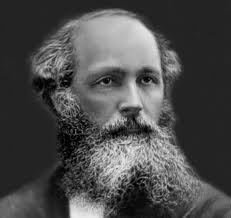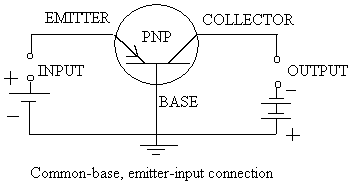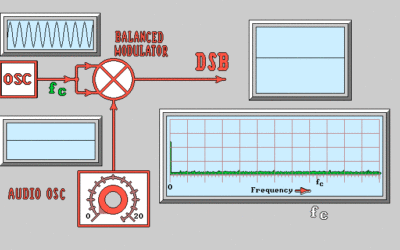
What is Single Side-band?
Before you can understand what SSB is, you must understand how audio is transmitted via radio waves. The method by which audio is impressed on a radio signal is called modulation. The two types of modulation that most people are familiar with are AM (amplitude modulation) and FM (frequency modulation), for which the AM and FM broadcast bands were named.
The Carrier.
In an AM-modulated radio signal, a base signal, called the carrier, is continuously broadcast. The two modulating signals are called the sidebands. Any audio that you hear on an AM broadcast station is from the two sidebands. When the radio station is not transmitting any sound, you can still hear that a signal is present; that is the carrier.
These two modulating (audio) sidebands are located on either side of the carrier signal–one just above the other just below. As a result, the sideband located just above the carrier frequency is called the upper sideband and that which is located just below the carrier frequency is called the lower sideband.
The Sidebands.
The pieces that fit together to form an AM broadcast signal are quite important. Although AM signals were transmitted almost exclusively for decades, it was discovered that the AM signal could be dissected. The first amateur radio operators to experiment with these processes often used both sidebands without the carrier. This is known as double sideband (DSB). DSB was typically used in the earlier operations because it was much easier to strip out just the carrier than to strip out the carrier and one of the sidebands.
Several years later (and still true today), it was much more common in the amateur bands to transmit merely using one of the sidebands, which is known as single sideband (SSB). Single sideband transmissions can consist of either the lower sideband (LSB) or the upper sideband (USB).
If you listen to an SSB signal on an AM modulation receiver, the voices are altered and sound a lot like cartoon ducks. As a result, you must have a special SSB receiver to listen to these transmissions. Although this was often difficult for the amateur radio operators of the 1950s to obtain, it is no longer a problem with today’s modern SSB transceivers.
Broadcasters Need Fidelity.
You might wonder why SSB modulation is used for some applications and AM is used for broadcasting. Broadcasters must have excellent audio fidelity when transmitting music; otherwise, the typical radio listener will tune to another station. In order to achieve excellent fidelity when transmitting music, both sidebands and the carrier are necessary.
To produce this AM signal, the transmitter is, in effect, working as three transmitters: one to produce a strong carrier for each of the sidebands, an upper sideband, and a lower sideband. The result is that approximately half of the transmitter power is “wasted” on a blank carrier and the rest of the power is divided between the two sidebands. As a result, the actual audio output from a 600-watt AM transmitter (300 watts of carrier + 150 watts on each sideband) would be the same as the 150-watt SSB transmitter.
SSB’s High Efficiency.
Let’s run some numbers: Suppose you have a typical 5-kW broadcast transmitter. You will only be able to impress 2.5 kW of audio power on that signal. This means that each of the two sidebands will have only 1.25 kW of power. But in highly effective communications using single sideband, a single sideband signal removes the carrier and one sideband and concentrates all of its energy in one sideband. Thus, a 1-kW SSB signal will “talk” as far as a 4-kW conventional AM or FM transmitter. It is one reason why long distances can be covered effectively with SSB.
Single sideband’s benefit is not only evident on transmission. The reverse happens on receive. When you work out the math, the efficiency with an SSB signal is 16 times greater than with a conventional AM signal.
HF Signal Characteristics.
HF (high frequency) is synonymous with the more familiar term, shortwave. The only difference is that HF is the term typically used for two-way and point-to-point communications. Shortwave is typically used when referring to broadcast stations in the same range. In amateur radio, both terms are frequently used.
The HF band extends from 1700 to 30,000 kHz (1.7 to 30 MHz). To give some perspective to these numbers:
The AM broadcast band runs from 540 to 1630 kHz.
The Citizen’s Band (CB) runs from 26,960 to 27,230 kHz (within the HF band).
Television channel 2 is on 54,000 kHz. (in the VHF band).
Each of these sample frequencies has different characteristics, and it is vitally important to learn this information so that you can effectively use the HF spectrum. When talking about HF, most people list the frequencies in either kHz (kilohertz) or MHz (megahertz). This is a matter of convenience only. The base rate for frequency is the hertz (Hz), named after Heinrich Hertz, an important “father of radio.” One kHz equals 1000 Hz and one MHz equals 1,000 kHz (1 million Hz).
Radio Waves.
The Hz divisions of the radio spectrum relate directly to the frequency. Signals such as light, radio, and sound are all waves. These waves travel through the air in a manner that is somewhat similar to waves in a pond. Each radio wave has a peak and a valley. The length of each radio wave is (not surprisingly) known as the wavelength. Radio waves travel at the speed of light, so the longer each wave is, the fewer waves can arrive in one second. The number of waves that arrive per second determines the frequency.
Although the wavelength and the frequency are different ways of saying the same thing, wavelengths for radio are rarely given. In the 1920s through the 1940s, the wavelength was more frequently used than the frequency. This was probably the case because the wavelength seemed like a more tangible measurement at the time. The wavelength of the radio signal is also important because it determines the length of the antenna that you will need for receiving and especially for transmitting.
Because of the signal characteristics on the AM and FM broadcast bands, combined with the less effective internal antennas, radio signals are often thought of as being used for primarily local reception (100 miles or so). However, with two-way communications in the HF band, you are not listening for entertainment to the strongest station that you can find. You are attempting to communicate with a particular station under what could be life-threatening circumstances.
In the 1910s and 1920s, most radio enthusiasts thought that the wavelengths below 180 meters were useless, that the frequencies above the top of today’s AM broadcast band were unusable. Little did they know that the opposite was true for communications over medium to long distances. These pioneers were mislead because they didn’t yet understand the methods by which radio waves travel.




